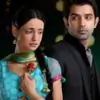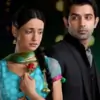Guys comment on it
Audiences called the shots in 2012
Bade Achche Laggte Hain's intimacy scene was a viral hit over with 2,697,586 clicks; Diya Aur Baati Hum has been a constant TRP-topper all through the year with its TRPs ranging between 5.5 and 6 every week. As if that's not enough, viewers were asked to decide the name for Naitik-Akshara's child in Yeh Rishta Kya Kehlata Hai, smses were run to know whether Jeevika should undergo abortion to donate bone marrow to Maanvi in Ek Hazaaron Mein Meri Behna Hai. Recently viewers were also asked to send their best wishes to Anandi for her wedding with Shiv and be a part of wedding in Balika Vadhu. In Punar Vivah, the channel had asked the audience to decide if Aarti should tell Yash about her divorce.
Indian television probably had never seen such outpouring of emotions when Barun Sobti decided to quit the hugely popular Iss Pyaar Ko Kya Naam Doon?. The channel was bombarded with phone-calls and e-mails from loyal fans and finally the show went off air to appease the fans.
The number of TV homes in India grew from 120 million in 2007 to 148 million in 2011. Cable reaches 94 million homes with 88 million analog connections and 6 million digital ones, while DTH has commanded 41 million subscribers. India is the world's third largest TV market next to China and USA. Television is projected to command half of the entertainment pie in India by 2015 as it is estimated to grow at a robust 14.5% cumulatively over the next five years, from an estimated ' 306 billion in 2010 to ' 602.5 billion by 2015.
For GECs, the mantra that worked in 2012 was Yeh audience hai, sab jaanti hai! The TV industry swears by TRPs which decides the fate of the show. If a show doesn't garner TRPs, it has gone off air in less than three months. GECs and showmakers have taken measures to "connect" with the audience. From emails, letters, phone-calls, smses — you name it and the audiences gave their inputs to various shows for the next-track-forward.
As India moves ahead on the digital path, television viewing is making that paradigm shift from the TV set to online viewing. India is a market with 800 million mobile handsets connected to the Internet, and another 150 million desktops and PCs. For many people, watching popular soaps on internet has become a matter of habit.
Talking about the role of the viewers, Rajan Shahi says, "In showbiz, it's important for us to take constant audiences' feedback through participatory activities. The voices of audiences are now audible through social networking sites, emails and the like. It's essential to strike a balance between story-line and audiences' likes/dislikes." So how does audiences' involvement in terms of feedback and participation in the creative process affect a show? "When a show is doing well, audiences connect with the character. In the end, it's the show which is the winner," says producer Sudhir Sharma.
How do GECs take a call when they have to cater to public demand? Sukesh Motwani, fiction head of a popular GEC shares, "Audiences definitely matter, but, we strike a balance between vision of the show and audiences' choices. If we change the basic vision of the show, we will lose our loyal audience."And where do actors figure in this? Actor Karanvir Bora says, "Audiences are now exposed to international TV shows. Now they look at portrayal of real characters."
In an age, when remote control decides the fate of a television show, here's a toast to the viewers






























202